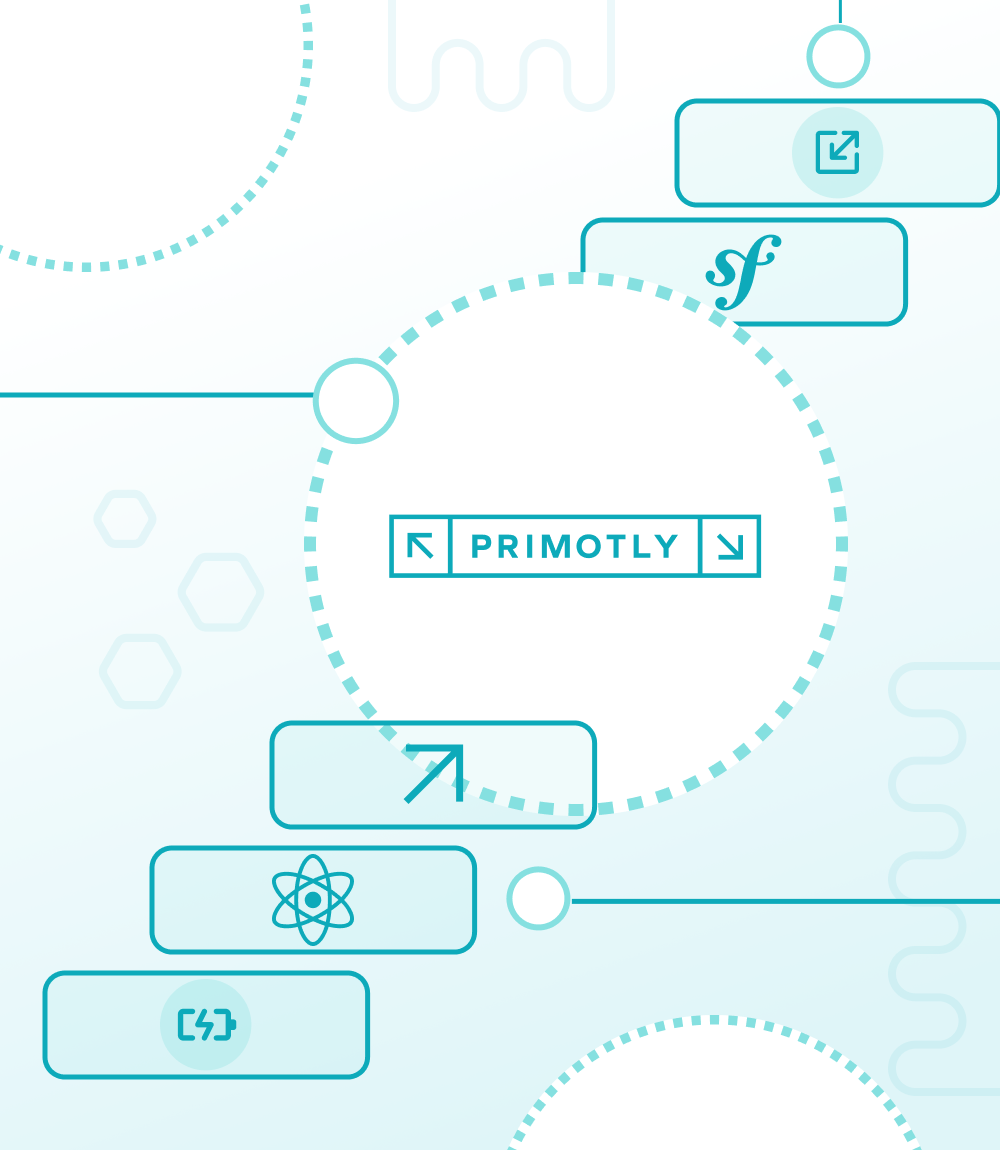The term "design" in the realm of digital products is frequently associated with the visual layer of a project. However, today, we shift our attention to the “software design” and its fundamental principles that fuel successful software development. This cornerstone aids in the crafting of functional, efficient, and adaptable digital products.


This article offers an all-encompassing exploration of essential tips and principles that are beneficial not only for programmers but for anyone immersed in the field of app development. Whether you're undertaking a modest personal project or contributing to a large-scale enterprise, the insights shared below will prove invaluable in your quest to develop effective software solutions. Let's dive in.
Software Design Principles: A Brief Background
Software design has traversed a remarkable journey since the advent of coding. During its nascent stages, it was primarily an unstructured process with an ad hoc approach that prioritized performance above all else. However, as software systems burgeoned in complexity and scale, the need for a more organized method to manage this complexity and assure efficient operation became paramount.
Here you can find the pivotal milestones that have shaped and refined the current standards in software design:
- STRUCTURED PROGRAMMING – Introduced in the late 1960s by Dutch computer scientist Edsger W. Dijkstra, it encapsulated a methodical approach to crafting code, fostering the emergence of modularity in software design.
- OBJECT-ORIENTED DESIGN – A programming paradigm that came into existence following structured programming. It centers around "objects", instances of classes that define attributes and methods. This allows software to be intuitively comprehensible, and conveniently modifiable.
- REUSABLE SOLUTIONS – A focus of the new millennium, these are design patterns that serve as reusable solutions to common problems. They promote efficiency and reduce the risk of code redundancy.
- AGILE AND DEVOPS METHODOLOGIES – Emerged alongside the focus on reusable solutions. These methodologies underscore flexibility, teamwork, and iterative app development.
- CLOUD COMPUTING AND AI - In the current epoch, cloud computing and AI-based development have taken center stage, emphasizing factors like scalability, resilience, and data-centric designs.
Despite this evolution, fundamental design principles remain as a guiding compass for developers, helping them through a maze of decision processes to design software that is robust, maintainable and long-lived.
The Importance of Software Design Principles
Software design takes center stage in the process of software development, serving as the blueprint that guides developers, transforming user requirements into a vision of a functional digital product. Here lies the critical importance of software design principles:
- MANAGING COMPLEXITY - Software design controls complexity, making the system easier to understand, debug, and maintain.
- ENHANCING REUSABILITY - Good design ensures components' modularity, promoting reuse and boosting productivity.
- EASE OF MAINTENANCE - Thoughtful design simplifies maintenance and facilitates system expansion without disrupting existing features.
- PERFORMANCE AND SCALABILITY - Effective design allows efficient handling of workloads and easy scalability as demands change.
- QUALITY OF FINAL PRODUCT - Following design principles helps avoid pitfalls and results in a user-friendly, efficient product.
In essence, software design is all about crafting software that is robust, adaptable, maintainable, and capable of evolving with fluctuating user needs and technological advancements. With the background and benefits now established, it's time to delve into the crux of our article – the key principles of software design.
Key Software Design Principles: The Building Blocks of Good Software
Understanding and applying the basic principles of software design is the key to creating high-quality software. By following these essential guidelines, developers are able to create software that's scalable, easy to maintain, efficient, and flexible. Presented here are the principles we've handpicked as the most foundational in software design.
So, what are they:
Design for Flexibility
Flexibility sits at the heart of modern software design. This principle emphasizes the capacity to accommodate changes to meet evolving demands. It involves engineering systems that exhibit modularity and scalability, simplifying the process of adding or eliminating components as required. Additionally, it includes establishing guidelines that permit distinct portions of the software to be altered independently, and detached from other components. By adhering to the principle of flexibility in design, developers are equipped to sculpt software that readily evolves in tandem with user requirements and technological progression.
Increase Reusability
Augmenting reusability refers to the strategic crafting of software components to facilitate their application across various sections of the same digital product or even entirely different products. This practice not only diminishes the volume of code that requires crafting, but also enhances consistency and aids in bug reduction, given that reusable components typically undergo thorough testing. The realization of reusability often necessitates the construction of modular, interconnected components, alongside the adoption of design patterns, which represent solutions to recurrent challenges within software design.
Design for Testability
Designing for testability entails constructing software in a manner that simplifies the testing process. The objective is to swiftly and effectively detect and rectify bugs or issues that might impede of digital product functionality or performance. Achieving this may involve crafting modular code, enabling individual software components to be tested in isolation. Additionally, it may entail designing with automated testing tools in mind, facilitating repeatable tests and freeing up time for more intricate manual testing. By prioritizing testability in design, developers can ensure that the software functions as intended, while also easing the burden of maintenance and facilitating continuous improvement.
Reduce Coupling
Coupling pertains to the degree of interdependence between software modules. Elevated coupling can result in unstable systems where modifications in one module ripple across numerous others. To enhance system stability and ease of modification, it becomes crucial to reduce coupling. This involves fostering greater independence among the components of a software system, thereby bolstering their robustness and facilitating seamless modifications. By the way, be sure to familiarize yourself with the Interface Segregation Principle:

Increase Cohension
Cohesion, within the realm of app development, revolves around the seamless integration of modules. It entails organizing related code in close proximity to maintain a coherent and maintainable codebase. Well-maintained code frequently exhibits a high level of consistency, ensuring that elements within a module harmonize closely with their intended functionality. By steering clear of unnecessary duplication of knowledge and consolidating module code in a consistent manner, the process of designing and testing software becomes more streamlined. Conversely, a lack of consistency results in code scattered throughout the database, posing challenges in identifying code associated with specific modules. This not only complicates the understanding of code context but also hampers smooth navigation between different modules.
Design Defensively
Designing software defensively encompasses the creation of a system that can effectively withstand unforeseen events and user behavior. This proactive approach involves anticipating a diverse array of scenarios, encompassing user errors and system failures, and implementing safeguards to gracefully manage them. For instance, defensive design entails adopting practices like stringent validation of user input to thwart the infiltration of malicious or erroneous data into the system, as well as implementing mechanisms to handle exceptions and avert runtime failures. By its essence, defensive design heightens software reliability and fortifies security, thereby enriching the user experience and fortifying the robustness of the system.
Design for Portability
Designing for portability involves the creation of software that can seamlessly transition between different environments. This encompasses the ability to migrate from one operating system to another or adapt to varying hardware configurations. Achieving portability entails leveraging widely accepted and understood standards and abstractions that transcend diverse systems. The advantage of prioritizing portability is the future-proofing it offers, alleviating the effort required to adapt the software to emerging platforms and technologies. By embracing design practices that ensure portability, software remains adaptable and well-positioned to navigate the ever-evolving tech landscape.
Anticipate Obsolescence
In the fast-paced realm of software technologies and platforms, staying ahead of obsolescence is vital to ensure software remains relevant. Anticipating obsolescence entails designing software with the ability to seamlessly adapt to evolving technologies. This involves crafting modular and flexible architectures, as well as selecting widely supported technologies and platforms with a promising future of maintenance. By proactively considering obsolescence, developers safeguard the longevity and maintainability of their software, enabling it to remain current and aligned with industry advancements in the long run.
The Importance of Software Design
In the pursuit of creating high-quality digital products, it is essential to comprehend and apply key software design principles. Each of the outlined tips we have presented holds substantial potential to significantly contribute to the overall success of your project. It is vital to familiarize yourself with these principles and keep them at the forefront of your mind. Take the necessary time to integrate them into your projects and observe the positive impact they have on the quality and durability of your software.





















